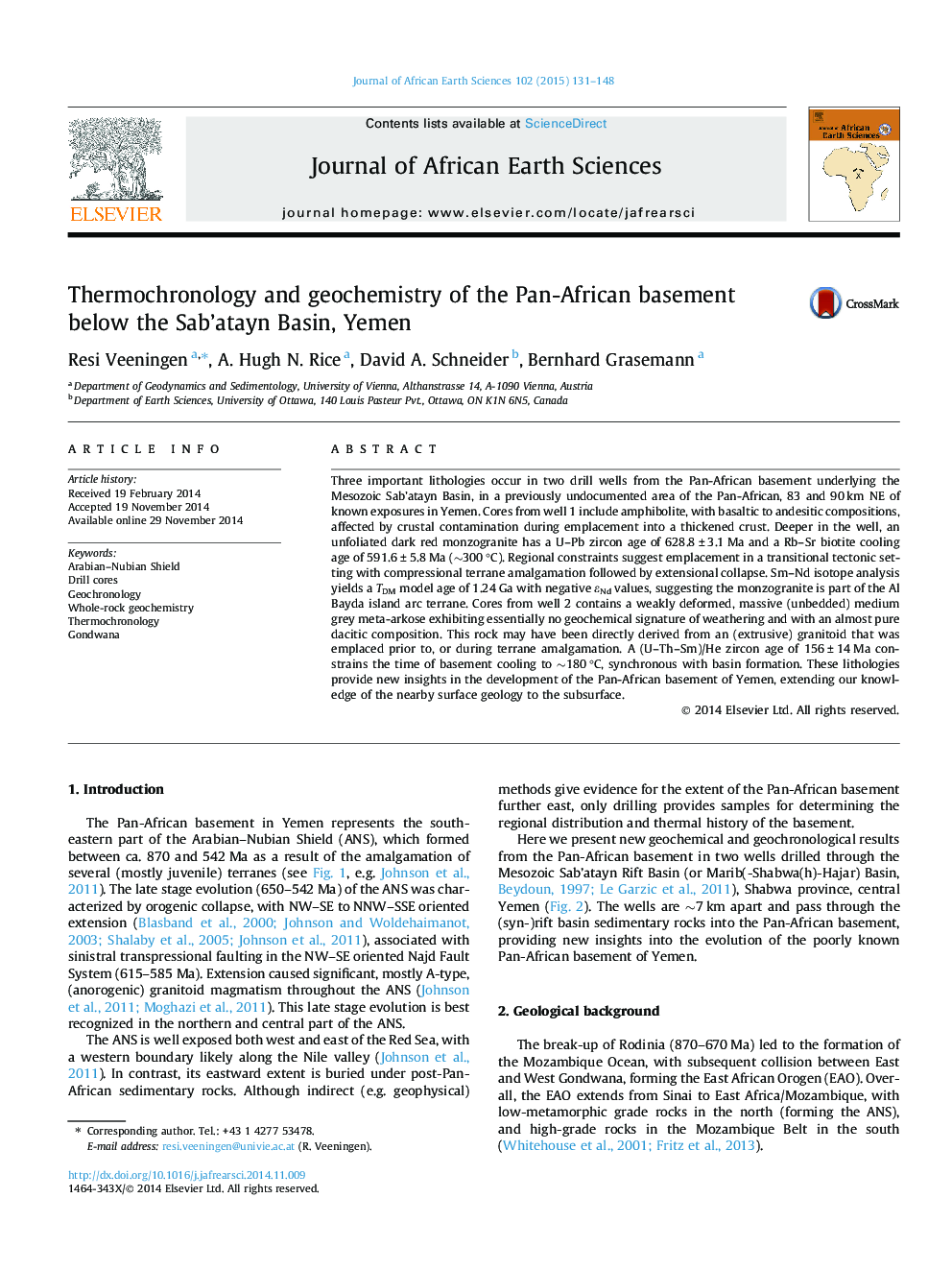| Article ID | Journal | Published Year | Pages | File Type |
|---|---|---|---|---|
| 4728617 | Journal of African Earth Sciences | 2015 | 18 Pages |
•Three subsurface Pan-African basement lithologies from Yemen were studied.•The monzogranite has a U–Pb zircon emplacement age of 628.8 ± 3.1 Ma.•The monzogranite was emplaced during a compressional to extensional tectonic regime.
Three important lithologies occur in two drill wells from the Pan-African basement underlying the Mesozoic Sab’atayn Basin, in a previously undocumented area of the Pan-African, 83 and 90 km NE of known exposures in Yemen. Cores from well 1 include amphibolite, with basaltic to andesitic compositions, affected by crustal contamination during emplacement into a thickened crust. Deeper in the well, an unfoliated dark red monzogranite has a U–Pb zircon age of 628.8 ± 3.1 Ma and a Rb–Sr biotite cooling age of 591.6 ± 5.8 Ma (∼300 °C). Regional constraints suggest emplacement in a transitional tectonic setting with compressional terrane amalgamation followed by extensional collapse. Sm–Nd isotope analysis yields a TDM model age of 1.24 Ga with negative εNd values, suggesting the monzogranite is part of the Al Bayda island arc terrane. Cores from well 2 contains a weakly deformed, massive (unbedded) medium grey meta-arkose exhibiting essentially no geochemical signature of weathering and with an almost pure dacitic composition. This rock may have been directly derived from an (extrusive) granitoid that was emplaced prior to, or during terrane amalgamation. A (U–Th–Sm)/He zircon age of 156 ± 14 Ma constrains the time of basement cooling to ∼180 °C, synchronous with basin formation. These lithologies provide new insights in the development of the Pan-African basement of Yemen, extending our knowledge of the nearby surface geology to the subsurface.
Graphical abstractFigure optionsDownload full-size imageDownload as PowerPoint slide
